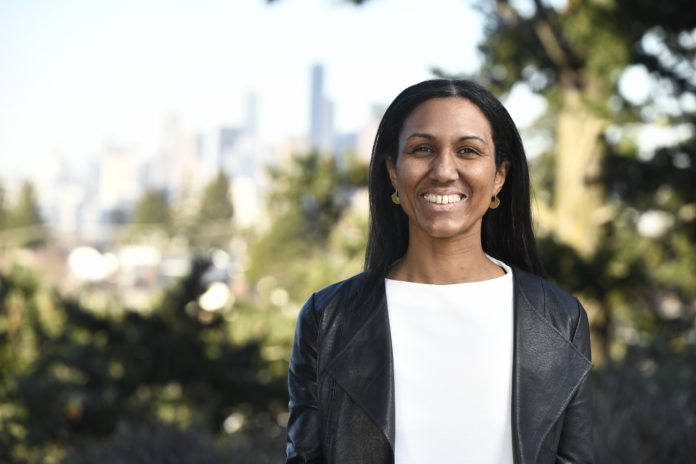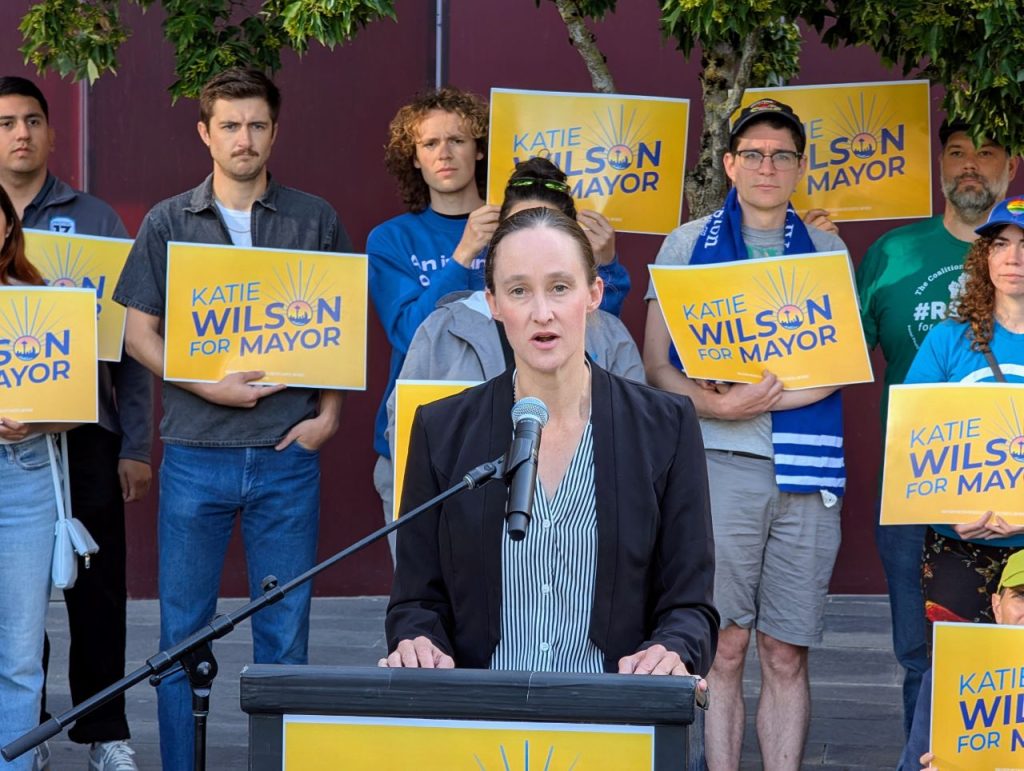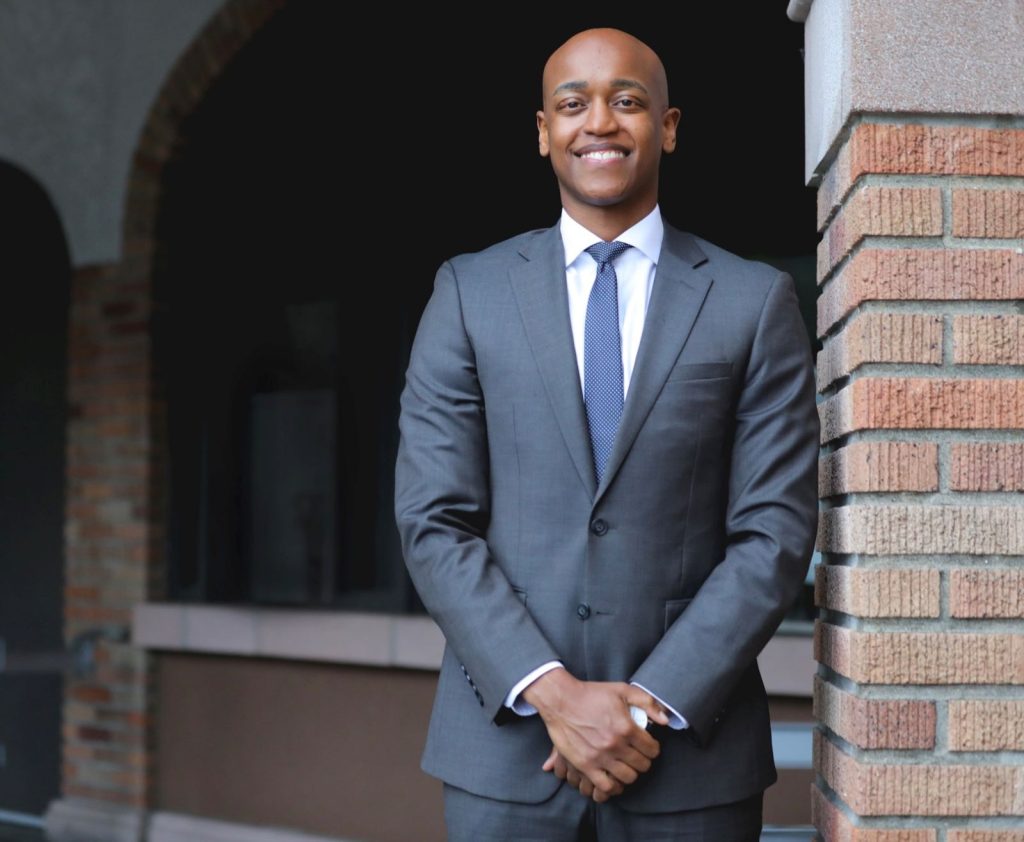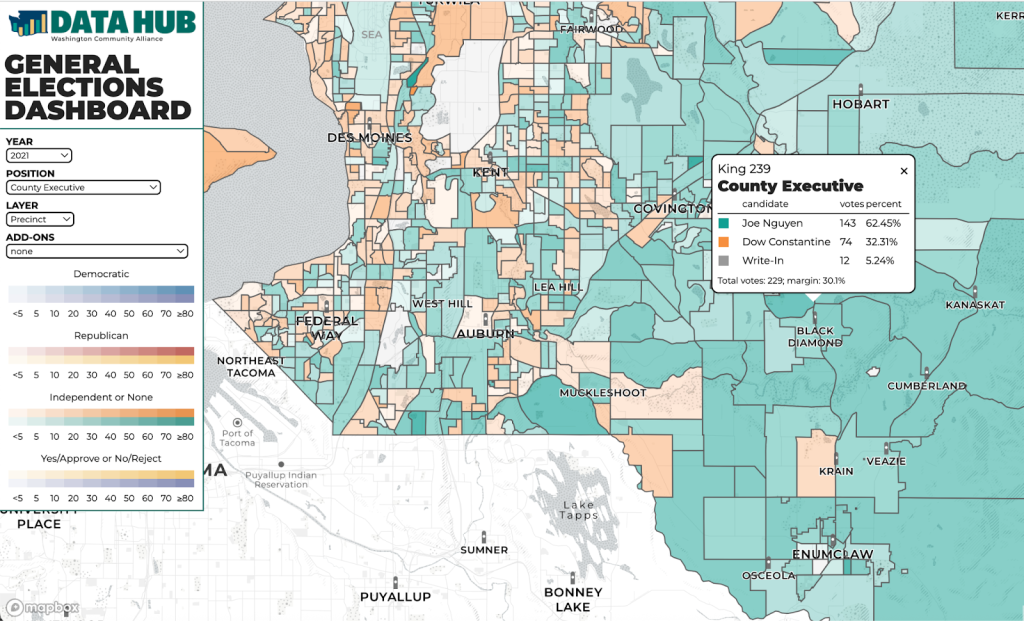
After losing three consecutive mayoral races and six of nine Council seats in two years, Seattle progressives sealed their best Primary election in over a decade.
The headline race for Seattle Mayor was the biggest upset of the night: progressive challenger Katie Wilson will comfortably win the Primary over incumbent centrist Bruce Harrell (48% to 44%). Fellow Stranger-endorsed progressives Girmay Zahilay (42% to 30%), Erika Evans (53% to 36%), Dionne Foster (55% to 38%), Alexis Mercedes Rinck (77% to 14%), and Eddie Lin (46% to 30%) all beat their moderate, Seattle Times-endorsed opponents.
Why did Seattle progressives dominate after collapsing the last four years? Here are a few theories. One, crime — a key contributor to recent progressive losses — has fallen after a nationwide spike during Covid. Two, Seattleites may veer left when Trump occupies the White House. Three, Seattleites are unhappy with the city’s direction and its current leadership, so they want change: progressives offer change, incumbent centrists are the status quo.
Progressives also performed well, but comparatively less strong, in first-ring suburbs like Burien, Kent, SeaTac, and Renton. King County Council Districts 5 (Kent, Renton, SeaTac) and 7 (Federal Way, Auburn) favored centrist candidates for County Council, but more progressive candidates of color performed well in municipal seats.
Historic data shows progressives fare better in the Primary, but are still favored this November
Conventional political wisdom holds that moderates do better in the Primary because Primary voters are older, whiter, and richer than General Election voters. While Primary voters are indeed older, whiter, and richer, in Seattle they’re also more college-educated, politically-engaged, and consequently, more progressive.
Analyzing Seattle municipal election data between 2019-2023, progressives earned six-point higher voteshares in the Primary than the General, on average, after tallying up candidates’ votes into two (oversimplified) ideological buckets.
One of the most memorable examples of a General moderate surge was Bruce Harrell’s last election where he trounced progressive Lorena Gonzalez 58.6% to 41% after a two-point Primary win — a net 15% swing. Wilson, currently leading Harrell by 4%, would lose the General with that same Primary-to-General swing.

So while moderate second-place Primary finishers could still win the General (as centrists City Attorney Ann Davison and Councilmember Sara Nelson did in 2021), it’s rare: only 9% did between 2012-2023. And most of those 9% were either razor-thing Primary wins or consequences of vote-splitting (ex: one Republican beating each of several Democrats splitting the Democratic Primary voteshare, then going on to lose in the General against a coalesced Democratic voter bloc). Now losing by nearly 20% instead of a couple points, Nelson and Davison are unlikely to repeat their 2021 comebacks.
By Friday’s drop, Wilson gained enough to clear the 50% threshold. It’s been at least a decade since a municipal candidate broke 50% in the Primary and didn’t win the General.

In the unfolding General between Zahilay and Bellevue-area Councilmember Claudia Balducci for King County Executive, Republican voters will play a crucial role. While solidly blue, still 30% of King County is Republican; and 30% of King County Primary voters did not vote for either Democratic frontrunner. Where those unaccounted votes land in November could be enough to erode Zahilay’s 12-point cushion over Balducci.
Conventional wisdom suggests Republican voters will opt for the more moderate Eastsider backed by the Seattle Times over the Seattle progressive backed by The Stranger, but the exact opposite happened four years ago: progressive Joe Nguyen’s strongest regions against incumbent Democrat Dow Constantine were in exurban Southeastern King County towns that voted for Donald Trump.

But that might be the exception rather than the rule: those same Republican voters opposed progressive Hamdi Mohamed and Toshiko Hasegawa’s 2021 challenges to less-known incumbent Democratic Seattle Port Commissioners. Constantine was well-known, and well-hated, amongst Republican voters for years; it’s unlikely Zahilay can rely on Balducci being the shared enemy Constantine was for Nguyen to win over Republican voters.

That said, Zahilay, at 42% in the Primary, will be tough to topple for two main reasons. Firstly, he won the Primary (by a lot), and 91% of Primary winners win the General. Secondly, a large fraction of King County Republicans historically choose neither when forced to pick between Democrats; Balducci appears to need Republican votes to win, Zahilay does not.
The Seattle Times and The Stranger dominate Seattle Primaries
Seattleites trust its local editorial boards — or at least, two of them. In every contest I checked (which is not all), every candidate endorsed by either The Stranger or The Seattle Times advanced to the General — except one.
Over 90% of votes went to a Stranger or Times endorsee in Seattle races where both papers endorsed. After the Times stayed out of Seattle City Council Position 8, nearly 80% of the vote went to Stranger-endorsee Rinck. This is not a new trend in Seattle, nor is it commonplace in other U.S. cities (see: NYC voters elected the exact person the NY Times Editorial Board instructed them to oppose).
It’s not like other candidates didn’t run respectable campaigns: Jamie Fackler earned heavy-weight endorsements from the Democratic Party, labor unions, and the last-elected councilmember in that seat, but ended with just 10% of the vote. Joe Mallahan, Rory O’Sullivan, Nathan Rouse, Jeannie Chunn, and Ry Armstrong all fundraised respectable six-figure sums, but ended with single-digit voteshares — save Chunn’s 13%.
Functionally, the present and foreseeable future of Seattle municipal Primary campaigns boils down to winning over a dozen Times or Stranger Editorial Board members.
Outside Seattle proper, the papers have less influence: moderate SeaTac Councilmember Peter Kwon won (28%) the King County Council District 5 Primary without either endorsement and Stranger-endorsee Kim-Khanh Van finds herself in a close 3rd place behind Times-endorsee Steffanie Fain (25% to 22%).
Blue wins, but no wave in state legislative special elections
One of the bigger surprises for me tonight was the lack of Democratic overperformance in key state legislative special elections. From Iowa to Florida, state legislative Democratic candidates have overperformed Kamala Harris’ 2024 benchmarks by 10, 20, sometimes 50 percentage points in special elections. While still leading Republicans, Democrats Sen. Deb Krishnadasan (LD26 – Gig Harbor, Bremerton) and Rep Victoria Hunt (LD5 – Southeast King) are underperforming Harris’s 2024 wins — by a margin of 8% and 12% less, respectively.
Turnout predictably matches historic trends
In King County, turnout is comparable to recent odd-year Primaries: 33.7% and counting versus 30.7% in 2023 and 35.0% in 2021. Voters over 65 years old were a slightly smaller fraction of the electorate compared to 2023 (35% versus 37% in 2023); voters under 35 comprised 1% more of the electorate than two years ago (16% vs 15%). Waterfront Seattle and Eastside precincts (older, wealthier, whiter areas) continue to have higher turnout; poorer, racially diverse, and South King precincts had lower turnout.

Andrew Hong
Andrew Hong is a data science student at Stanford University and lifelong Washingtonian from South Seattle. He has previously worked as a campaign consultant, community organizer, statewide coordinator of Redistricting Justice for Washington, and as a research data analyst at the Washington Community Alliance Data Hub.



